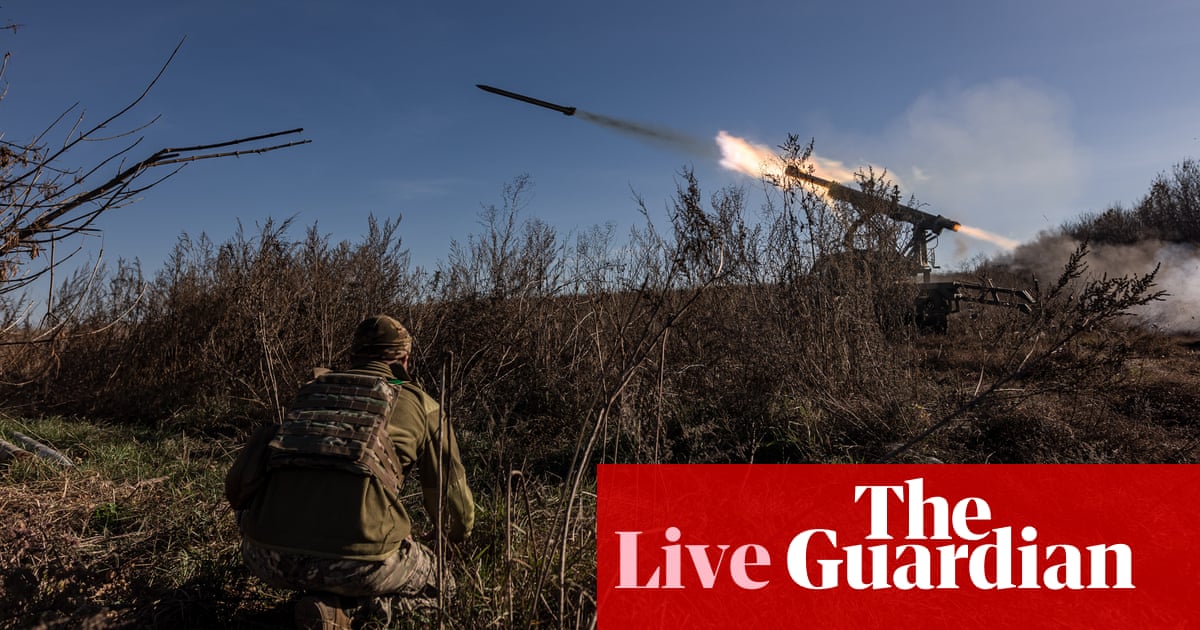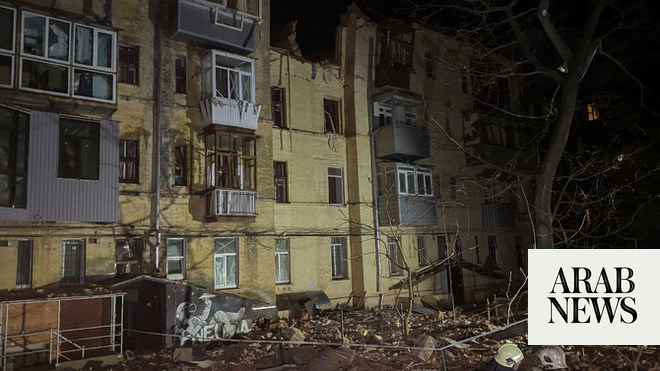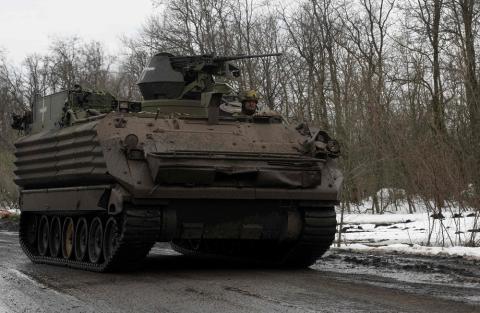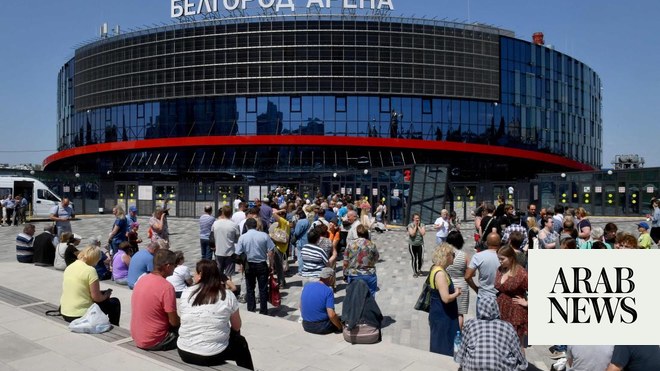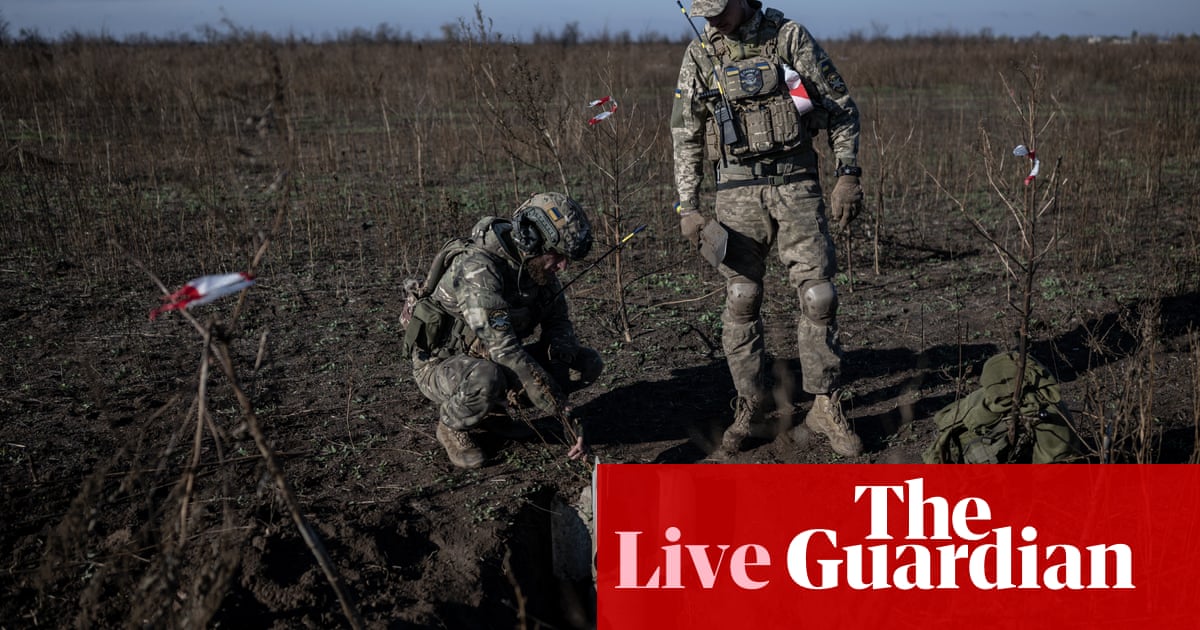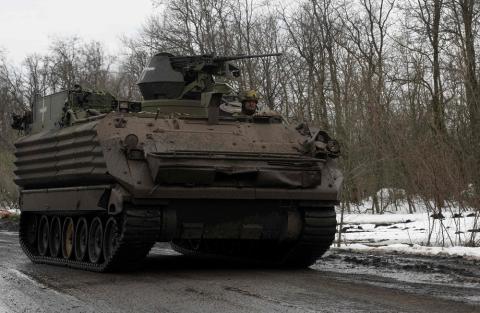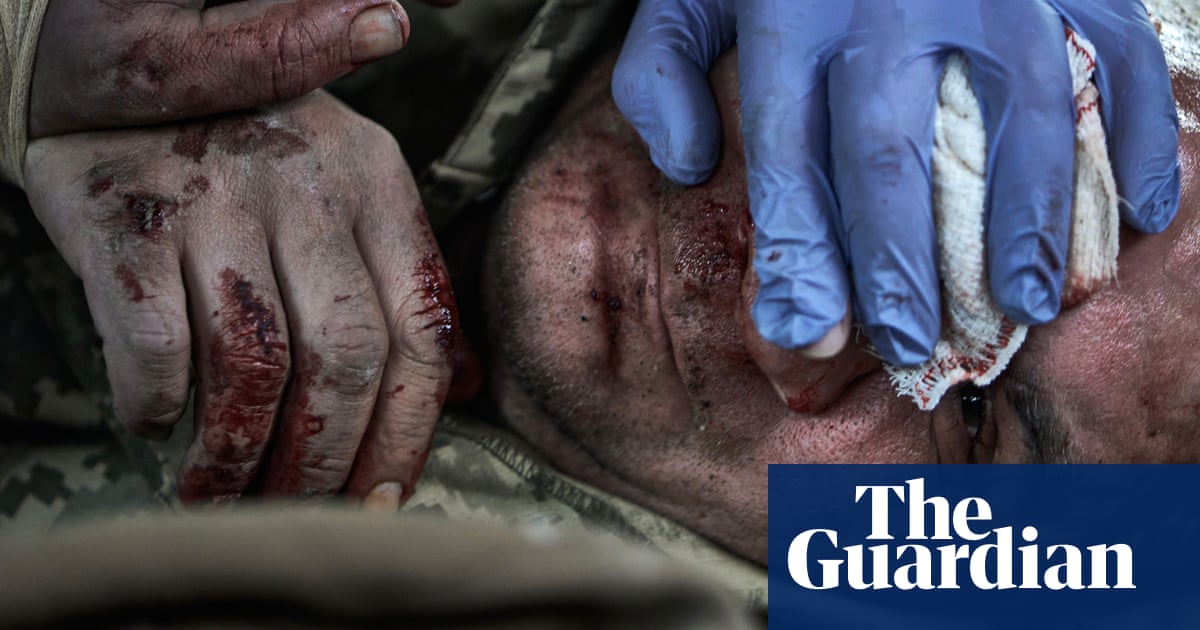
Russia has carried out its biggest artillery attack so far this year, Ukraine has said, as Kyiv’s top general admitted the war had reached a deadlock, with little prospect that his troops would make “a deep and beautiful breakthrough”.
Gen Valerii Zaluzhnyi, Ukraine’s commander in chief, gave a bleak assessment of the situation on the battlefield, 20 months after Vladimir Putin’s full-scale invasion.
He acknowledged that his soldiers had failed to punch through entrenched Russian defensive positions and minefields. A counteroffensive which began five months ago, with the aim of driving the Russians from the occupied south of the country, had not worked.
“Just like in the first world war, we have reached the level of technology that puts us into a stalemate,” he told the Economist, in an interview published on Wednesday. He added: “There will most likely be no deep and beautiful breakthrough.”
Zaluzhnyi’s comments come at a critical time in the war, with Russia apparently taking delivery from North Korea of millions of additional shells. The supply – agreed after a deal between Moscow and Pyongyang – is reportedly enough for two months.
Russian troops have bombarded Ukrainian towns and villages across a 600-mile frontline. In recent weeks they have pulverised the southern city of Kherson – which Ukraine took back last year – and targeted numerous settlements in the eastern Donbas.
“Over the last 24 hours, the enemy shelled 118 settlements in 10 regions,” Ihor Klymenko, Ukraine’s interior minister, wrote on social media. He added: “This is the highest number of cities and villages that have come under attack since the start of the year.”
Ukraine reported a Russian attack on an oil refinery in Kremenchuk, a central industrial city. There were no casualties. It took almost 100 firefighters several hours to put out the resulting fire, Klymenko said. Overnight shelling killed one person in Kharkiv oblast in the north-east. Another died in the Kherson region, local officials said.
Zaluzhnyi said the war had reached a new stage of attritional fighting, with neither side capable of making much progress. It would take a significant technological development to break the deadlock, he added. In the meantime, Russia with its superior numbers, was slowly getting the upper hand.
According to Nato textbooks, Ukraine’s forces should have been able to advance at a pace of 18 miles a day. The reality was different, Zaluzhnyi said. He said when his commanders had struggled to make the offensive work, he had replaced them. Results had not improved.
Eventually, he said, he had turned to a book published in 1941 by a Soviet major-general, PS Smirnov, entitled Breaching Fortified Defensive Lines. It analysed first world war battles. “Before I got even halfway through it, I realised that is exactly where we are, because, just like then, the level of our technological development today has put both us and our enemies in a stupor,” Zaluzhnyi said.
He said that Russia’s recent attempt to encircle the Ukrainian-held eastern city of Avdiivka had confirmed his thesis. Russian troops began a large-scale attack last month, using tanks and infantry. They had managed to advance by only a few hundred metres.
“On our monitor screens the day I was there, we saw 140 Russian machines ablaze – destroyed within four hours of coming within firing range of our artillery,” Zaluzhnyi said. He said drones had picked off Russian soldiers as they tried to flee.
“The simple fact is that we see everything the enemy is doing and they see everything we are doing. In order for us to break this deadlock, we need something new, like the gunpowder which the Chinese invented and which we are still using to kill each other,” Zaluzhnyi said.
The general said he had underestimated Putin’s willingness to sacrifice his own soldiers – “at least 150,000 killed” so far. “Let’s be honest, [Russia] is a feudal state where the cheapest resource is human life. And for us … the most expensive thing we have is our people,” Zaluzhnyi said.
Prolonged fighting had put Ukraine at a disadvantage, he admitted. “This will benefit Russia, allowing it to rebuild its military power, eventually threatening Ukraine’s armed forces and the state itself.”
In the coming months, the government of Volodymyr Zelenskiy faces a series of domestic and diplomatic challenges. At home, there is a need to keep morale high among an exhausted population, as the war drags on with no end in sight. Russia is also likely to try to destroy Ukraine’s energy infrastructure, as it did last winter.
Internationally, Zelenskiy has to ensure that the western coalition supplying Kyiv with arms remains united. There is concern over political developments in Washington, where some hardline Republicans have been increasingly vocal about their opposition to the Biden administration’s military support for Kyiv, and its latest proposed $61bn package.
In a video address, Zelenskiy sought to manage expectations and to remind his partners of how much Ukraine had already achieved.
“The modern world quickly gets accustomed to success. When full-scale aggression began, many around the world expected Ukraine to not withstand. Now, the incredible things our people, our soldiers, are doing are perceived as a given,” Zelenskiy said.
He mentioned the resumption of grain exports this summer, after Ukraine drove out Russia’s fleet and won back control of some of the Black Sea.
It remains to be seen if the delivery of F-16 jets promised by the Netherlands, Denmark and Belgium will help Ukraine on the battlefield. They are likely to arrive sometime next year.
“Basic weapons, such as missiles and shells, remain essential. But Ukraine’s armed forces need key military capabilities and technologies to break out of this kind of war. The most important one is air power,” Zaluzhyni wrote in an article.
One priority was for Ukraine to build up its reserve forces and to clamp down on people who tried to avoid military service.
“We are trying to fix these problems. We are introducing a unified register of draftees, and we must expand the category of citizens who can be called up for training or mobilisation.”
As Ukraine hopes for better technology and additional funding from the west, South Korea’s national intelligence service said the North had been sending shells to Russia via ship and other methods since early August. Those shells would roughly amount to two months’ supply for the Russians, it said.
The US, South Korea and Japan issued a joint statement on 26 October that strongly condemned what they described as North Korea’s supply of arms to Russia, saying such shipments would sharply increase the human toll of Russia’s aggression in Ukraine.
The White House had earlier said North Korea had delivered more than 1,000 containers of military equipment and munitions to Russia. It released images that it said showed the containers being loaded on to a Russian-flagged ship before being moved via train to south-western Russia.




